Spring has sprung at Devil's Lake State Park, and with it comes a charming little…
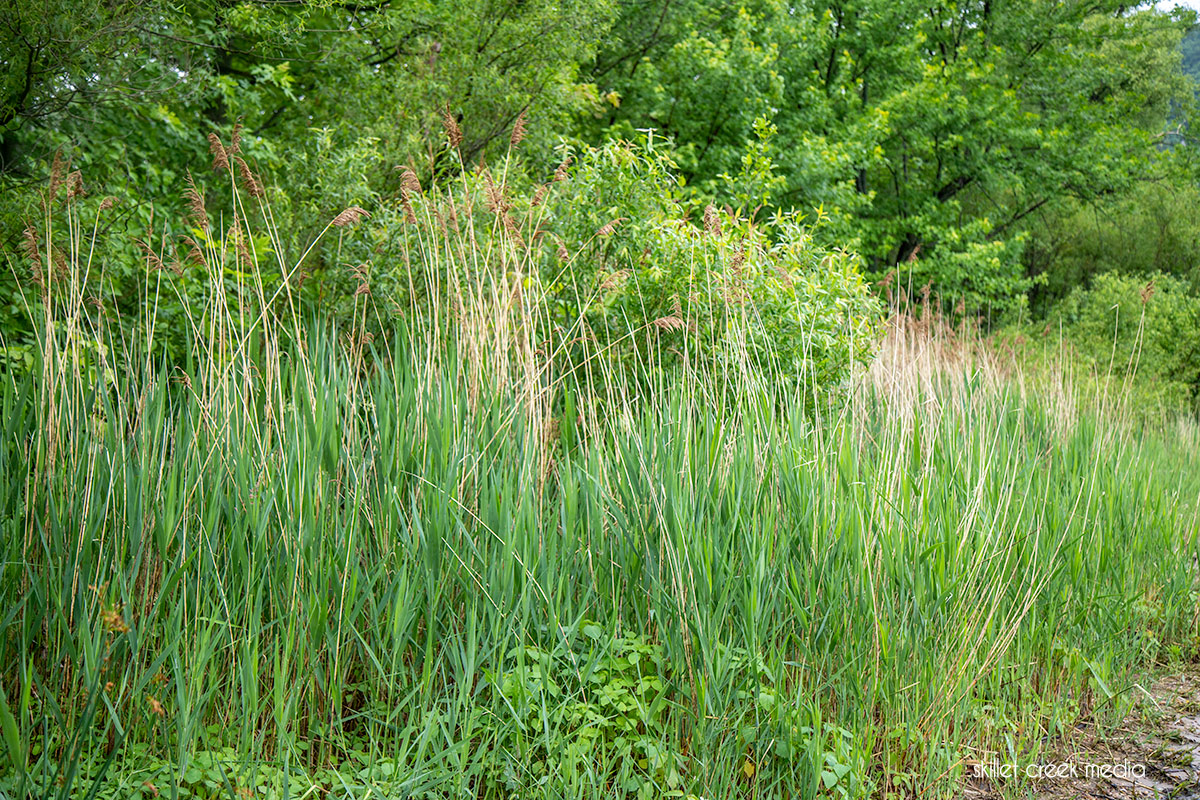
June is Invasive Species Action Month which is intended to encourage us all to help prevent the introduction and spread of invasive species that harm our native wildlife & landscapes. So we’ve been sharing a few invasives around Devil’s Lake State Park that aren’t garlic mustard! This week let’s Look at Phragmites…
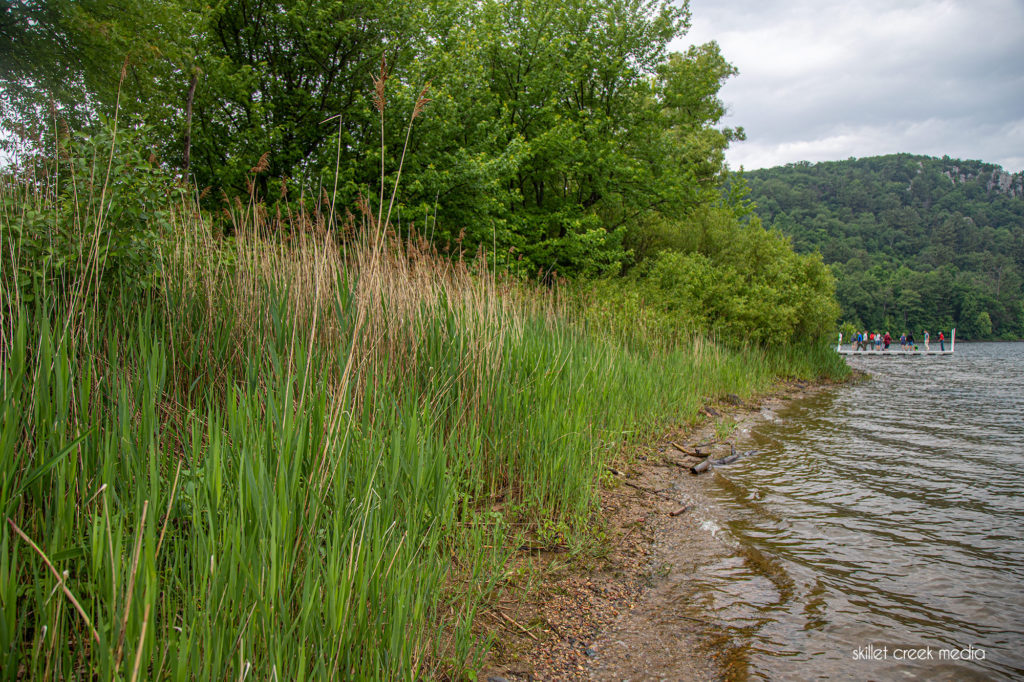
What Is It?
Phragmites is said to be the tallest wetland grass you’ll find in Wisconsin, growing up to 14 feet tall! It grows commonly in disturbed areas, ditches, and of course, near boat landings where it can be brought in on a dirty boat and get a start on the shore of the lake, like here at Devil’s Lake.
Why Is It Bad?
Once established, invasive phragmites gets so thick that it quickly pushes out everything else and degrades the landscape or in the case of Devil’s Lake, the shoreline. Because each year’s growth rots very slowly year over year, it becomes a dense and nearly impossible wall to move through. Phragmites will block access and ruin fishing, hunting, swimming, and other former uses. Once it’s established, it can be very hard to remove.
Once Established, Hard to Control
Invasive phragmites primarily reproduce by producing rhizomes underground like daylilies. If you’ve ever tried to remove an old daylily planting, you’ll know how hard that can be! It seems like you can never get it all! Phragmites rhizomes can grow up to six feet per year and reach more than 60 feet in length! They can also penetrate more than six feet into the earth! That’s why you have to jump on it early!
For a small patch, you can cut it and chemically treat it. Once it spreads, you have to use a glyphosate product (And near water, labeled for aquatic use.) If removing it near water, you do need a permit from the DNR.
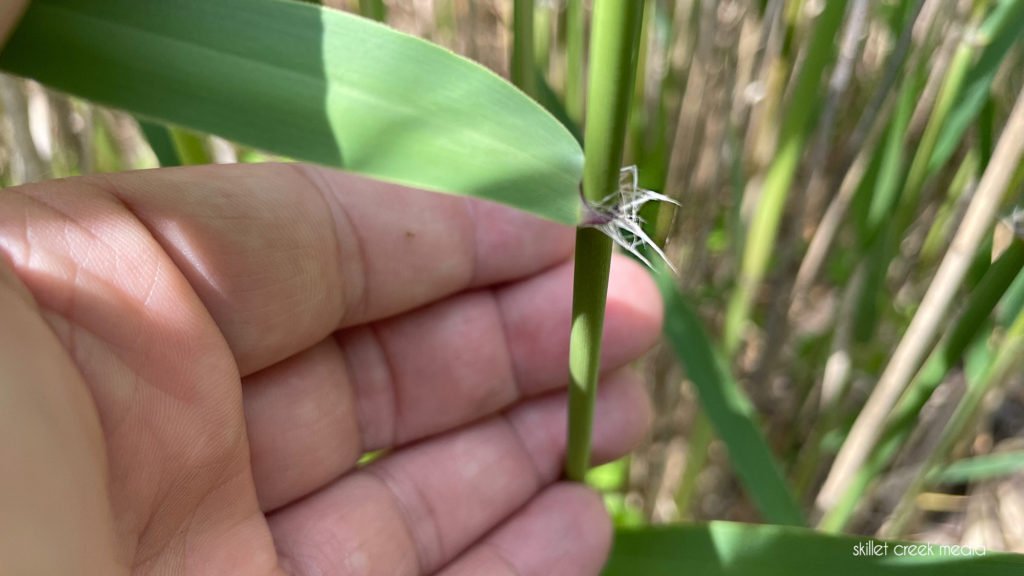
Act Fast!
So, I can’t help but express some frustration with the fact that phragmites has been spreading near the boat landing at Devil’s Lake State Park. This is a fairly small lake where phragmites can do some real damage. As soon as I knew what I was looking at a few years back, I reported it (twice.) to the DNR staff and the DNR’s Invasive species folks. Time passes and it keeps spreading. Because chemicals are needed, the DNR must take the lead here. It’s now covering most of the shoreline from south shore road to the paved boat landing. Maybe this is just another battle we don’t have the time, staff, or energy to fight. The thing is, if you’re paying attention, it gets hard to watch as our environment degrades around us. Especially in our beloved park. (Insert your favorite Aldo Leopold quote here!)

It’s Everywhere!
It’s pretty easy to find phragmites as it really is out-of-control. You’ll see it often in ditches and wet areas along highways and other roadways in Wisconsin. Right here in Baraboo along historic Millrace Drive, across from Baraboo’s Riverwalk, you’ll find a sea of Phragmites. Here’s it’s quickly taking over a wetland area that was once a millrace. Interestingly, I learned to fish in the long-gone millpond where the phragmites now lives!
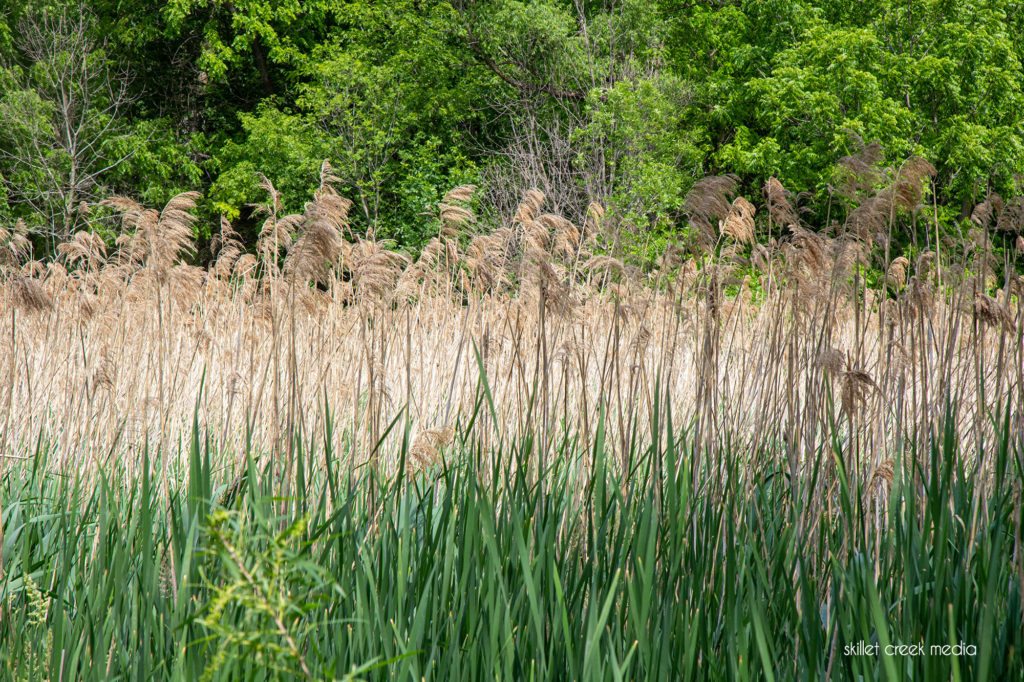
Phragmites Takes Over Millponds 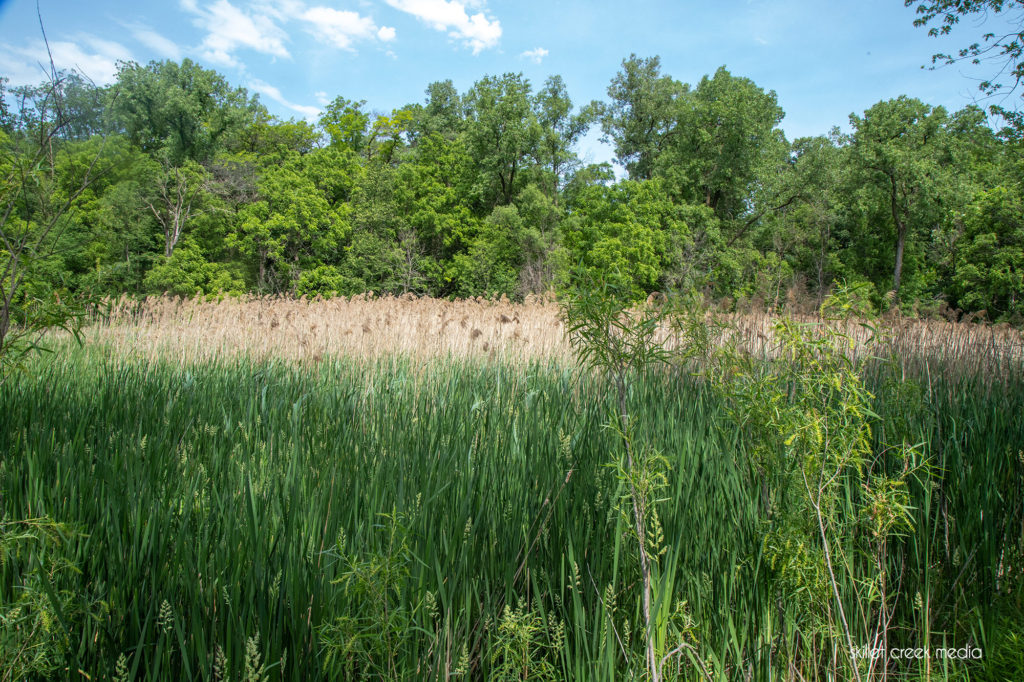
Phragmites Takes Over Millponds
What can I do?
Well, if you find a patch on your land, remove it! If you see it in your favorite state park, report it. But to be honest, if the authorities can’t or don’t take action where possible, there is very little most of us can do, but watch it spread.
And yes, whenever I feel like we should do more, I have to express that this is just my personal opinion.
References & More Reading
- Invasive plant profile: Phragmites – Wisconsin Wetlands Association
- Invasive Phragmites – Wisconsin UW Horticulture
- Protect your wetlands from Invasive Phragmites – WI DNR (PDF)
- NON-NATIVE PHRAGMITES OR COMMON REED – WI DNR

For nearly 2 decades the Skillet Creek blog has focused on 3 main goals; To inspire you to visit and explore the Devil’s Lake region, to help you get the most your visit by sharing tips, events, and other helpful information. Lastly to advocate for our environment & wildlife and talk about how we can keep our natural areas amazing now and into the future! That last goal can sometimes cause controversy, but it’s the only way we can accomplish the first two. – Derrick Mayoleth, Owner.
This Post Has 2 Comments
Comments are closed.

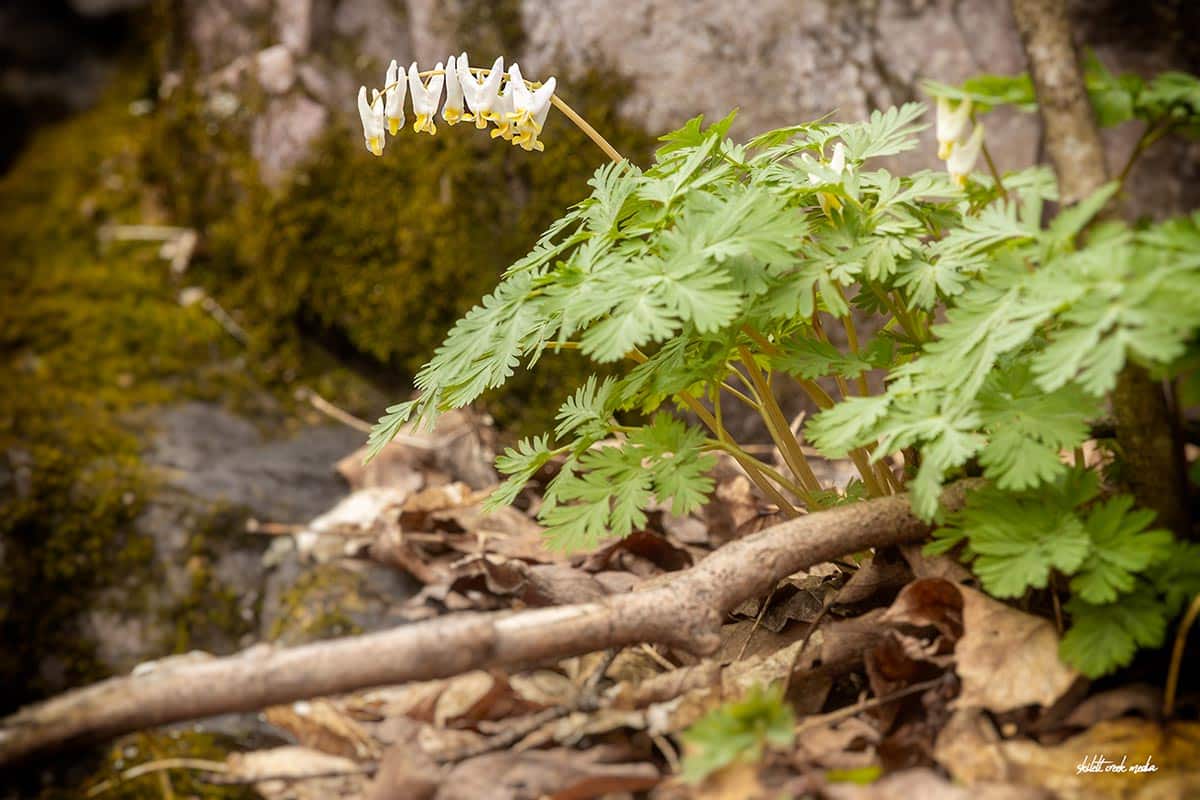
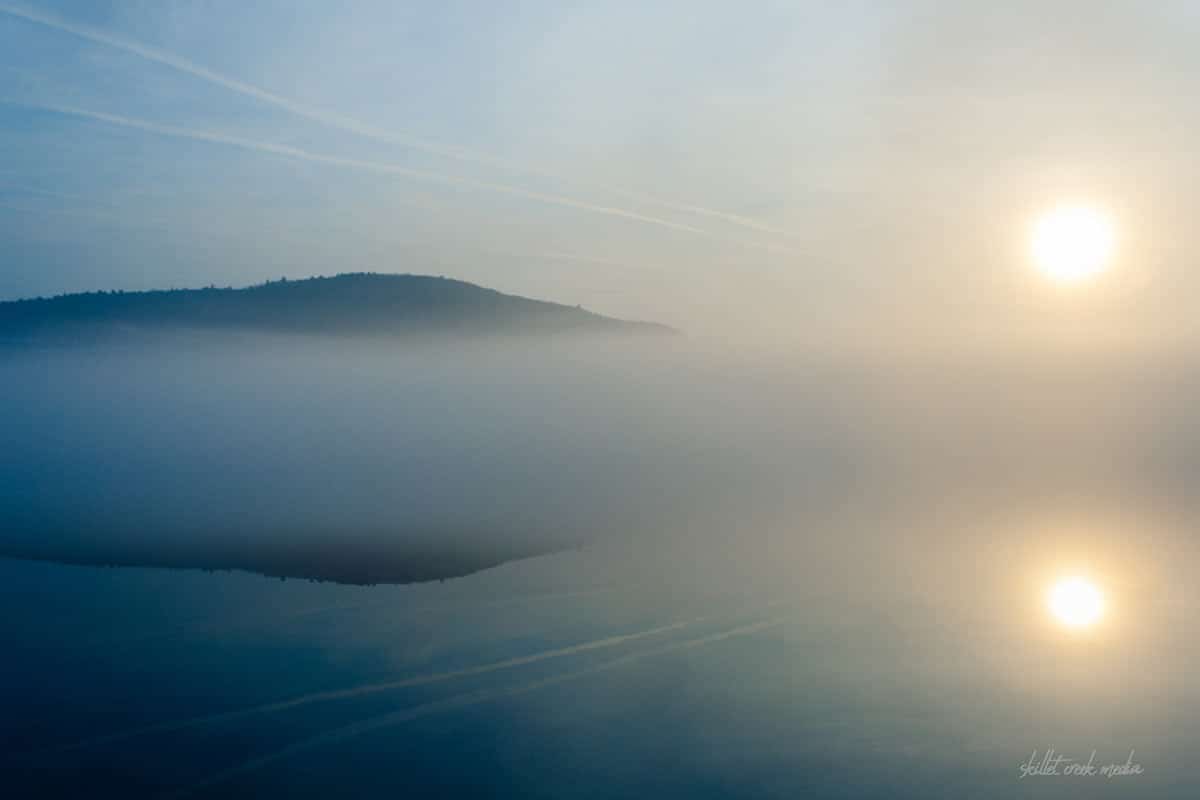
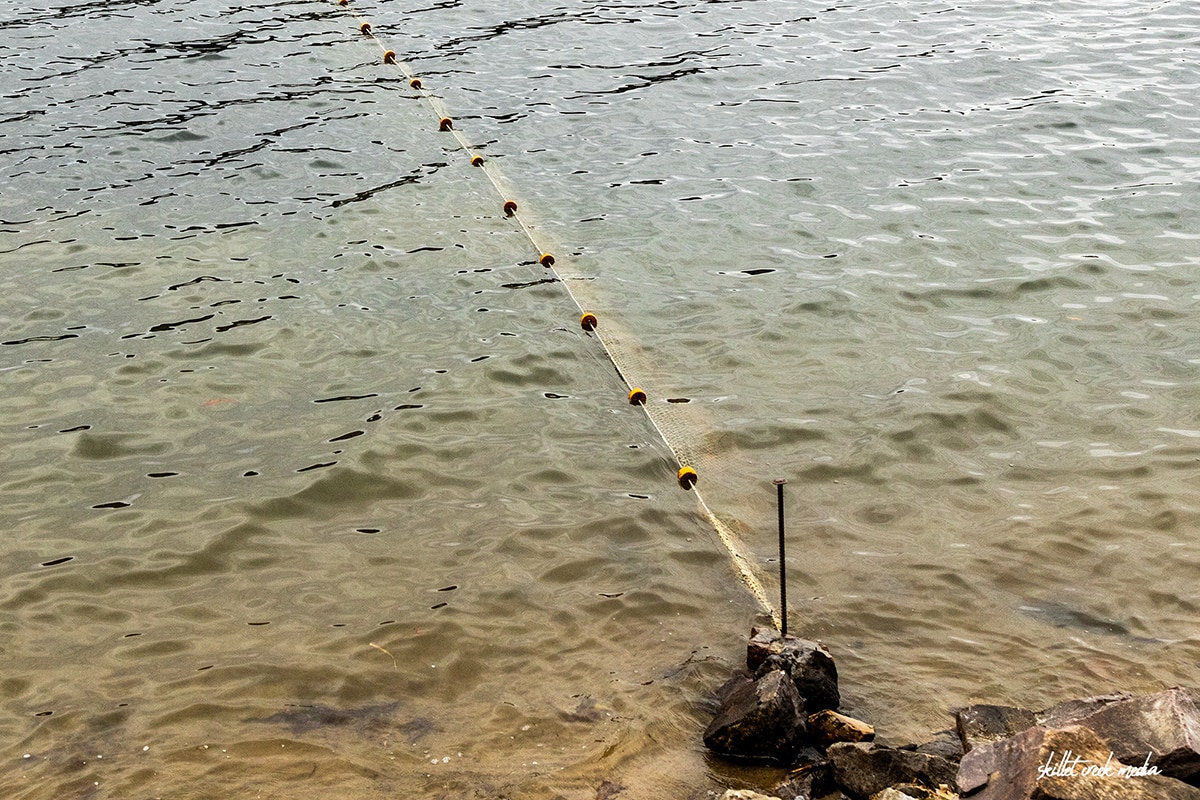
Could not agree with you more ! So frustrating to be told that you have to get permission to take action AND THEN–GET NO RESPONSE / PERMISSION / ACTION. Looking at the pictures, if you were to “quietly” attempt to physically pull these, it would be futile. Proper aqautic chemicals are needed and that is on the DNR.
Exactly, the rhizomes are far too deep to pull. In fact, if you try you would probably spread them through breakage. It has to be a DNR project for sure.